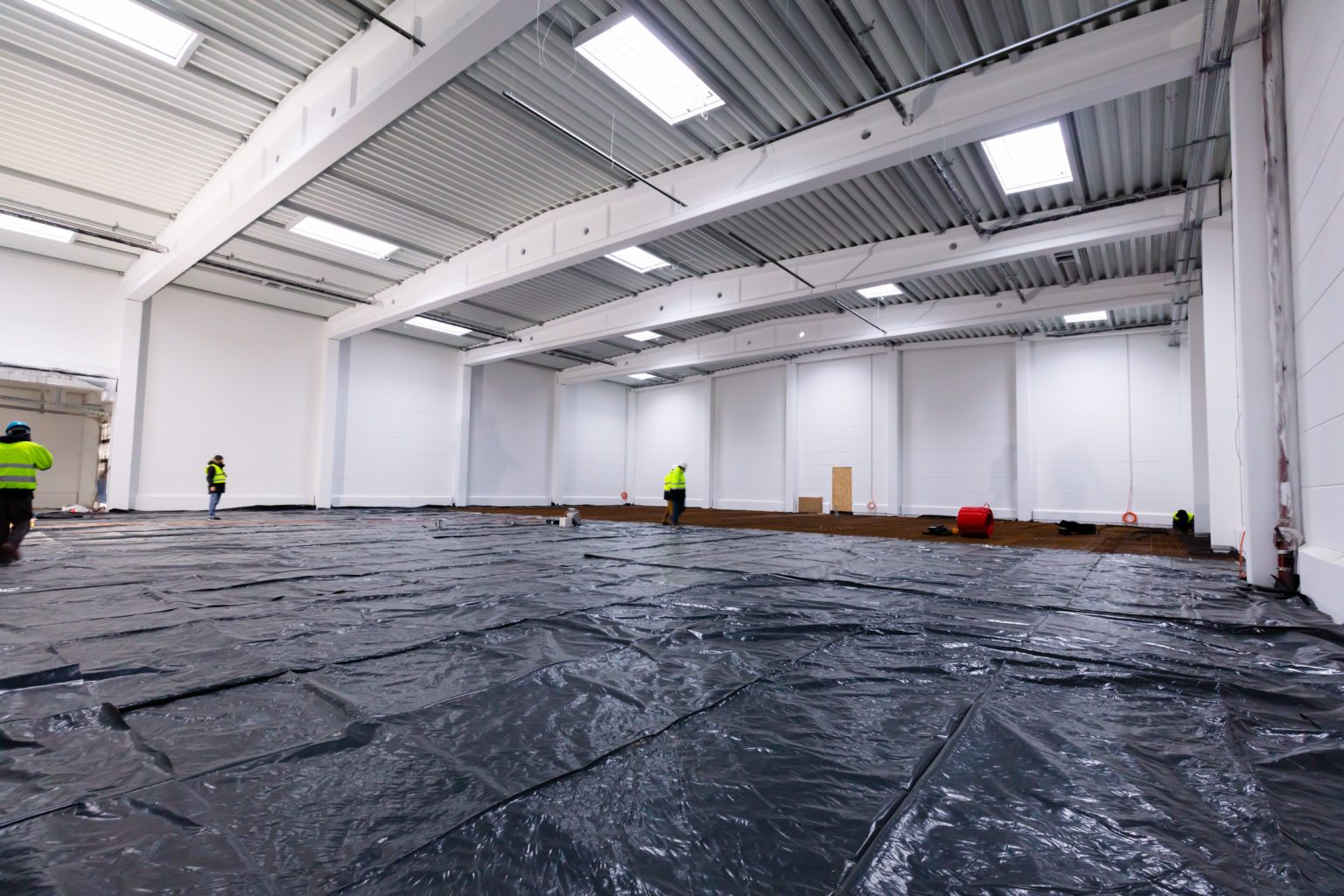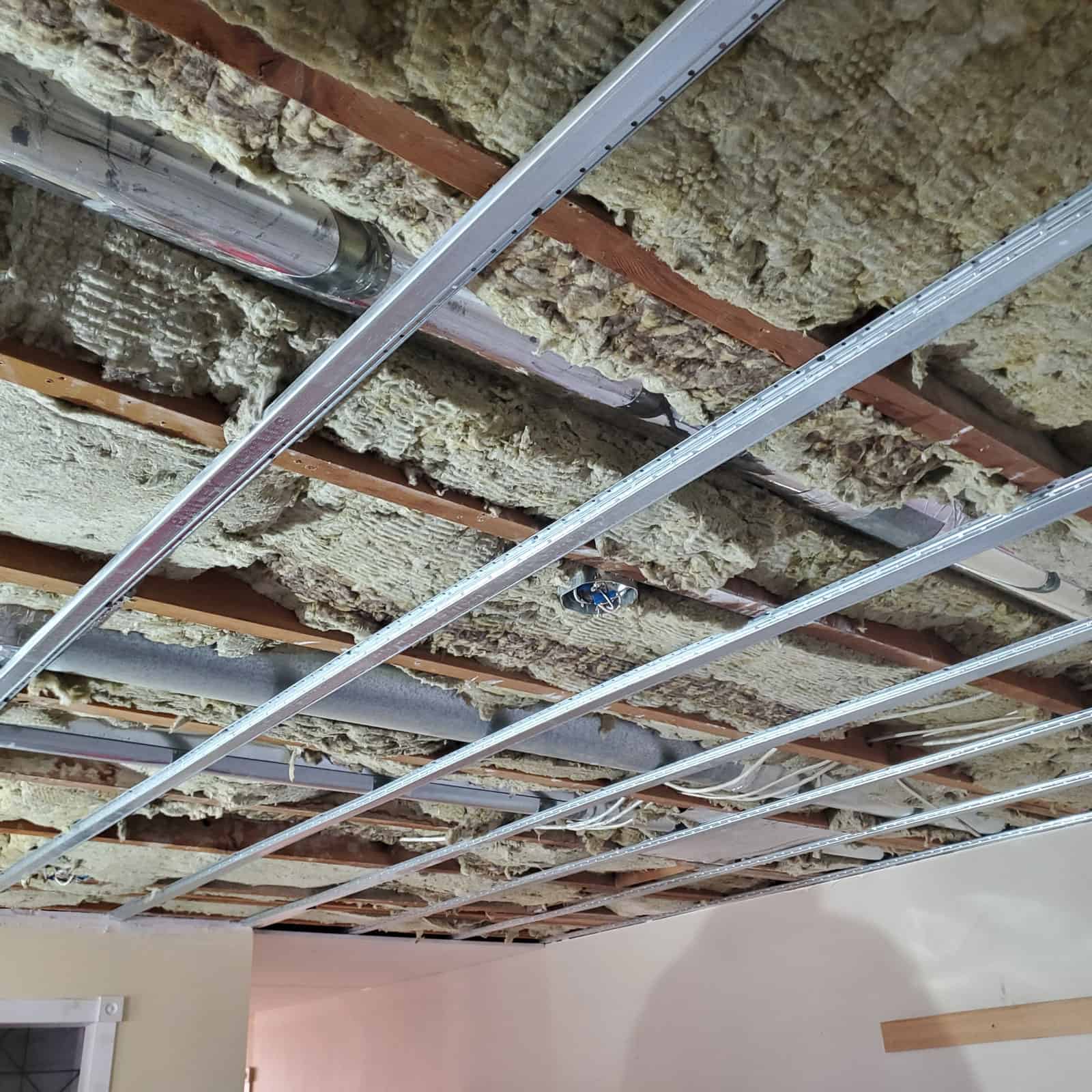Plastic Sheeting Behind Ceiling Drywall For Vapor Barrier
Plastic Sheeting Behind Ceiling Drywall For Vapor Barrier - To create a reliable vapor barrier for your home insulation, you should use polyethylene plastic sheeting, ideally 6 mil thick or more. Polyethylene plastic sheeting is a popular choice, but make sure it’s thick enough (usually 6 mils or thicker) for durability. Not all plastic sheeting materials can be considered a vapor barrier for walls and ceilings. Builders using plastic sheeting must meet. Simply put, a ceiling vapor barrier is a material installed on the warm side of your ceiling assembly (usually between the drywall.
Builders using plastic sheeting must meet. To create a reliable vapor barrier for your home insulation, you should use polyethylene plastic sheeting, ideally 6 mil thick or more. Polyethylene plastic sheeting is a popular choice, but make sure it’s thick enough (usually 6 mils or thicker) for durability. Simply put, a ceiling vapor barrier is a material installed on the warm side of your ceiling assembly (usually between the drywall. Not all plastic sheeting materials can be considered a vapor barrier for walls and ceilings.
Simply put, a ceiling vapor barrier is a material installed on the warm side of your ceiling assembly (usually between the drywall. Builders using plastic sheeting must meet. Not all plastic sheeting materials can be considered a vapor barrier for walls and ceilings. To create a reliable vapor barrier for your home insulation, you should use polyethylene plastic sheeting, ideally 6 mil thick or more. Polyethylene plastic sheeting is a popular choice, but make sure it’s thick enough (usually 6 mils or thicker) for durability.
Basement Plastic Vapor Barrier Openbasement
Polyethylene plastic sheeting is a popular choice, but make sure it’s thick enough (usually 6 mils or thicker) for durability. To create a reliable vapor barrier for your home insulation, you should use polyethylene plastic sheeting, ideally 6 mil thick or more. Not all plastic sheeting materials can be considered a vapor barrier for walls and ceilings. Simply put, a.
How To Repair Vapor Barrier Behind Drywall?
Polyethylene plastic sheeting is a popular choice, but make sure it’s thick enough (usually 6 mils or thicker) for durability. To create a reliable vapor barrier for your home insulation, you should use polyethylene plastic sheeting, ideally 6 mil thick or more. Not all plastic sheeting materials can be considered a vapor barrier for walls and ceilings. Builders using plastic.
Vapour Barrier Installation Services Richmond Hill ON Pro Insulation
Simply put, a ceiling vapor barrier is a material installed on the warm side of your ceiling assembly (usually between the drywall. To create a reliable vapor barrier for your home insulation, you should use polyethylene plastic sheeting, ideally 6 mil thick or more. Builders using plastic sheeting must meet. Not all plastic sheeting materials can be considered a vapor.
Successful Vapor Control Fine Homebuilding
Simply put, a ceiling vapor barrier is a material installed on the warm side of your ceiling assembly (usually between the drywall. To create a reliable vapor barrier for your home insulation, you should use polyethylene plastic sheeting, ideally 6 mil thick or more. Polyethylene plastic sheeting is a popular choice, but make sure it’s thick enough (usually 6 mils.
Vapor barrier above ceiling drywall? r/Insulation
Builders using plastic sheeting must meet. Polyethylene plastic sheeting is a popular choice, but make sure it’s thick enough (usually 6 mils or thicker) for durability. Simply put, a ceiling vapor barrier is a material installed on the warm side of your ceiling assembly (usually between the drywall. To create a reliable vapor barrier for your home insulation, you should.
How To Install Poly Vapor Barrier
Simply put, a ceiling vapor barrier is a material installed on the warm side of your ceiling assembly (usually between the drywall. Builders using plastic sheeting must meet. Not all plastic sheeting materials can be considered a vapor barrier for walls and ceilings. To create a reliable vapor barrier for your home insulation, you should use polyethylene plastic sheeting, ideally.
Vapor Barriers Americover Specialty Plastic Sheeting Solutions
Polyethylene plastic sheeting is a popular choice, but make sure it’s thick enough (usually 6 mils or thicker) for durability. To create a reliable vapor barrier for your home insulation, you should use polyethylene plastic sheeting, ideally 6 mil thick or more. Builders using plastic sheeting must meet. Simply put, a ceiling vapor barrier is a material installed on the.
What is correct vapour barrier method for bathroom ceiling in a
Builders using plastic sheeting must meet. Not all plastic sheeting materials can be considered a vapor barrier for walls and ceilings. Simply put, a ceiling vapor barrier is a material installed on the warm side of your ceiling assembly (usually between the drywall. Polyethylene plastic sheeting is a popular choice, but make sure it’s thick enough (usually 6 mils or.
Insulation & Vapor Barrier Installation Gordon Drywall & Painting
Builders using plastic sheeting must meet. Simply put, a ceiling vapor barrier is a material installed on the warm side of your ceiling assembly (usually between the drywall. To create a reliable vapor barrier for your home insulation, you should use polyethylene plastic sheeting, ideally 6 mil thick or more. Not all plastic sheeting materials can be considered a vapor.
Post Frame Home Ceiling Vapor Barrier Explained! YouTube
To create a reliable vapor barrier for your home insulation, you should use polyethylene plastic sheeting, ideally 6 mil thick or more. Not all plastic sheeting materials can be considered a vapor barrier for walls and ceilings. Builders using plastic sheeting must meet. Polyethylene plastic sheeting is a popular choice, but make sure it’s thick enough (usually 6 mils or.
Not All Plastic Sheeting Materials Can Be Considered A Vapor Barrier For Walls And Ceilings.
To create a reliable vapor barrier for your home insulation, you should use polyethylene plastic sheeting, ideally 6 mil thick or more. Builders using plastic sheeting must meet. Polyethylene plastic sheeting is a popular choice, but make sure it’s thick enough (usually 6 mils or thicker) for durability. Simply put, a ceiling vapor barrier is a material installed on the warm side of your ceiling assembly (usually between the drywall.









